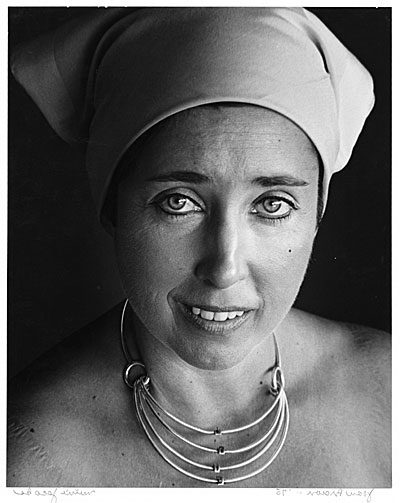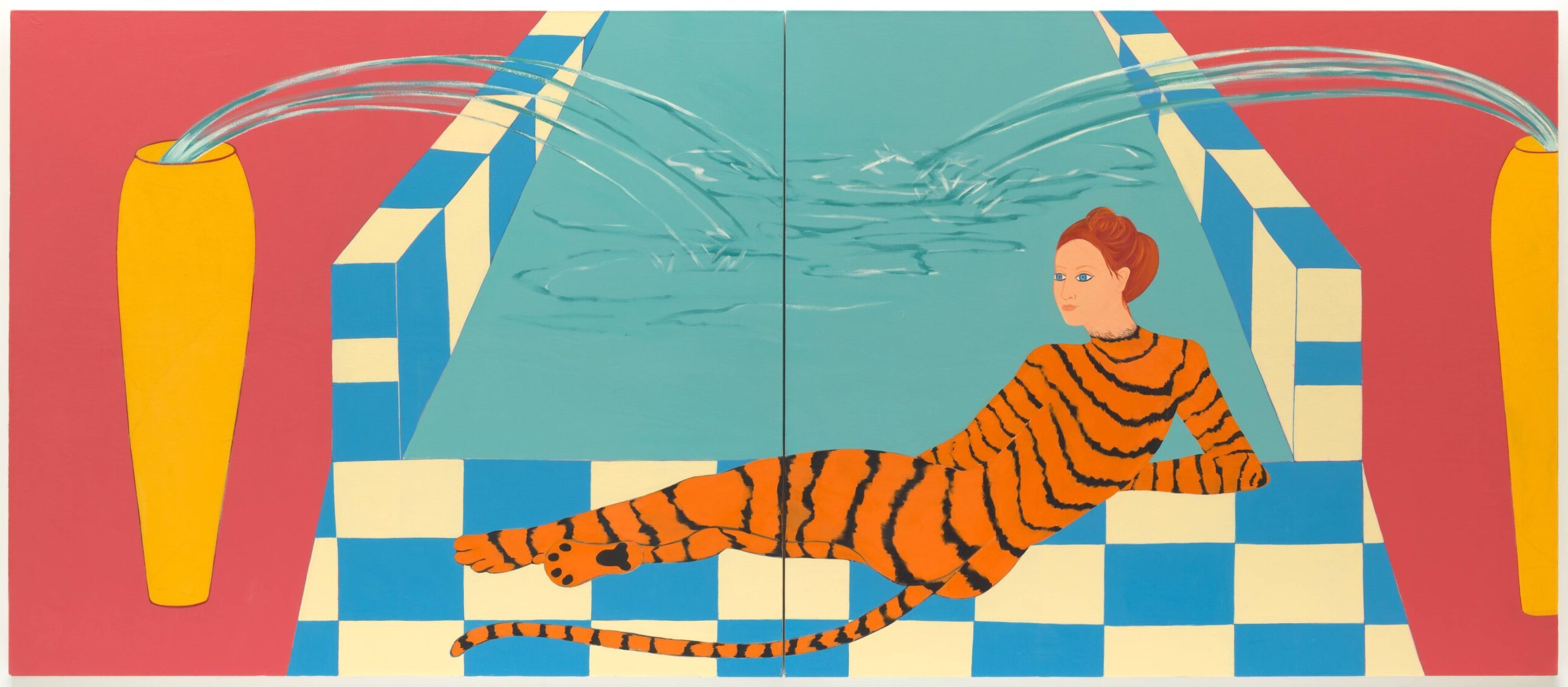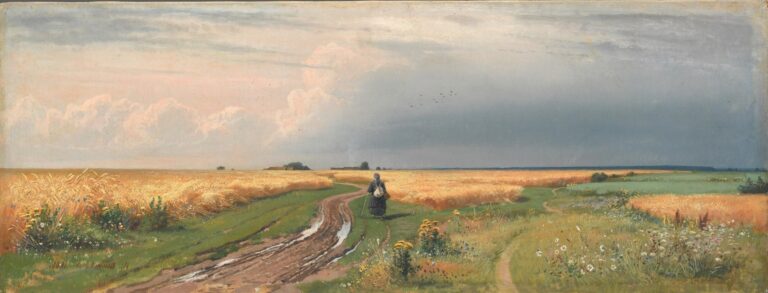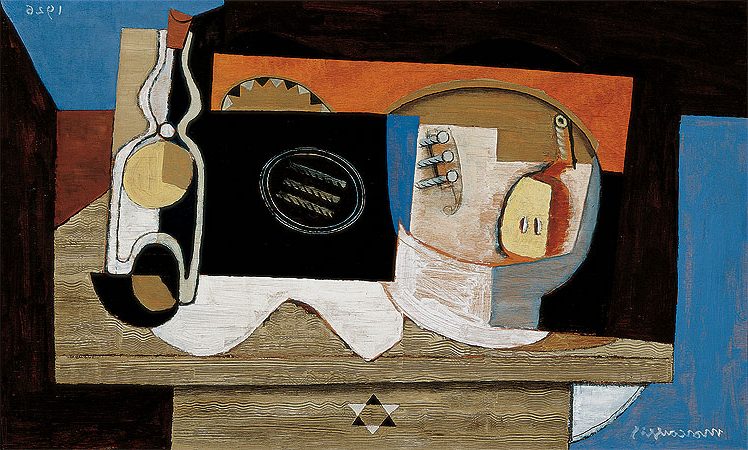Joan Brown: Painter Who Revolutionized the Bay Area Figurative Movement
Born: February 13, 1938, San Francisco, California, U.S.
Death: October 26, 1990, Puttaparthi, India
Art Movement: Bay Area Figurative Movement
Nationality: American
Teacher: Elmer Bischoff
Institution: San Francisco Art Institute
Joan Brown: Painter Who Revolutionized the Bay Area Figurative Movement
Life and Career of Joan Brown
Joan Brown emerged as a significant figurative painter in the Northern California art scene.
Born on February 13, 1938, in San Francisco, she developed a distinctive style that evolved throughout her career until her tragic death in 1990.
Early Influence and Education
Joan Brown attended the California School of Fine Arts (now the San Francisco Art Institute) where she found mentorship under established artists.
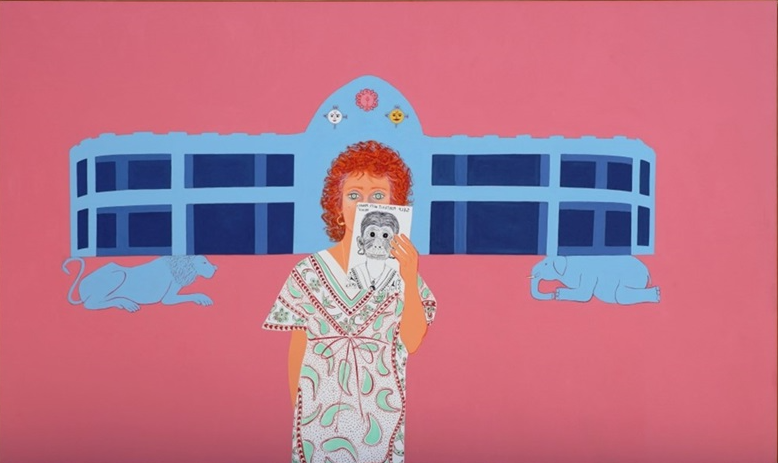
Homage to Sathya Sai Baba, 1979, by Joan Brown
Her primary mentor was Elmer Bischoff, whose influence shaped her early artistic development. Another important figure in her formative years was David Park.
Brown quickly gained recognition in the San Francisco art community. The beatnik atmosphere of the city during this period contributed significantly to her artistic sensibilities and subject matter.
She found early success while still a student, with her work drawing attention for its thick, impasto paint application and expressive style. This early recognition established her as a promising talent in the Bay Area art scene.
Artistic Evolution and Themes
Brown’s artistic style underwent significant transformation throughout her career.
Her early work featured heavy paint application and abstract figurative elements, reflecting the influence of her mentors.
By the 1970s, her style shifted toward more defined, flat figures with bold outlines. Personal experiences became increasingly central to her work, with swimming emerging as a recurring theme.
Brown was an avid swimmer, and water imagery appeared frequently in her paintings.
Her later work incorporated spiritual and mystical elements, reflecting her growing interest in Eastern philosophies. Egyptian and Hindu imagery began to appear in her paintings, showing her expanding worldview and spiritual explorations.
Personal Life and Artistic Collaborations
Brown’s personal experiences deeply informed her artistic output. She married several times, including to fellow artists, and these relationships influenced her creative direction. Her marriages became part of her artistic narrative, appearing in her self-portraiture.
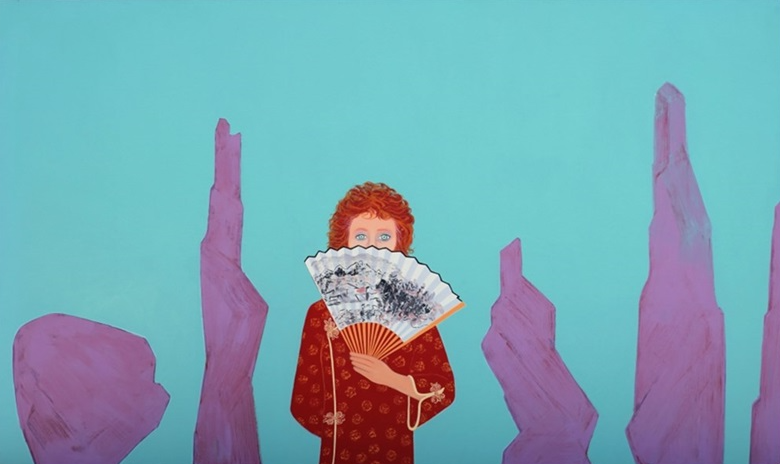
Huangshan Mountains, 1983, by Joan Brown
She maintained strong connections to the San Francisco art community throughout her life. Despite achieving success, Brown continued teaching at various institutions, including the University of California.
Her life ended tragically on October 26, 1990, during an installation project in India when a turret collapsed. This sudden loss cut short a vibrant career that had continually evolved over decades, leaving behind a significant legacy in American figurative painting.
Major Works and Artistic Style
Joan Brown developed a distinctive artistic approach that evolved from abstract expressionism to vibrant figurative painting. Her work featured bold colors, personal symbolism, and a unique visual language that captured everyday life with emotional depth.
Figurative Painting Period
Brown emerged as a key member of the second generation of Bay Area Figurative artists in the late 1950s. After studying at the California School of Fine Arts (now San Francisco Art Institute), she moved away from abstract expressionism toward more representational work.
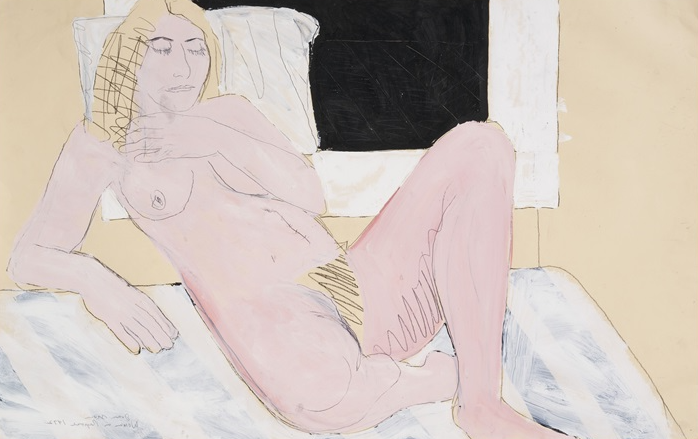
Woman in Repose, 1972, by Joan Brown
Her paintings from the 1960s and 1970s showcase her signature style: bright colors, sometimes cartoonish drawing techniques, and deeply personal subject matter. During this period, Brown created many of her most recognizable works, including numerous self-portraits that explored her identity.
Brown’s figurative paintings often depicted domestic scenes, family members, and her beloved pets. These works balanced technical skill with emotional expressiveness, creating a visual diary of her life experiences.
Incorporation of Personal Iconography
Brown developed a rich visual vocabulary of personal symbols throughout her career. Her work frequently featured recurring motifs that held special meaning, including animals, swimming figures, and domestic objects.
Her interest in Frida Kahlo’s autobiographical approach influenced her willingness to incorporate intimate personal narratives into her art. Brown’s paintings often included her cats and dogs as central figures, elevating everyday companions to artistic subjects.
In the 1970s, Brown began incorporating elements inspired by Asian art, particularly Egyptian and Hindu imagery. This interest reflected her spiritual journey and expanding worldview, adding new dimensions to her distinctive iconography.
These personal symbols allowed Brown to explore complex themes while maintaining her characteristic directness and visual clarity.
Public Recognition and Museum Exhibitions
Brown’s work gained significant recognition during her lifetime. Her paintings were featured in important exhibitions at major institutions, helping establish her reputation in the art world.
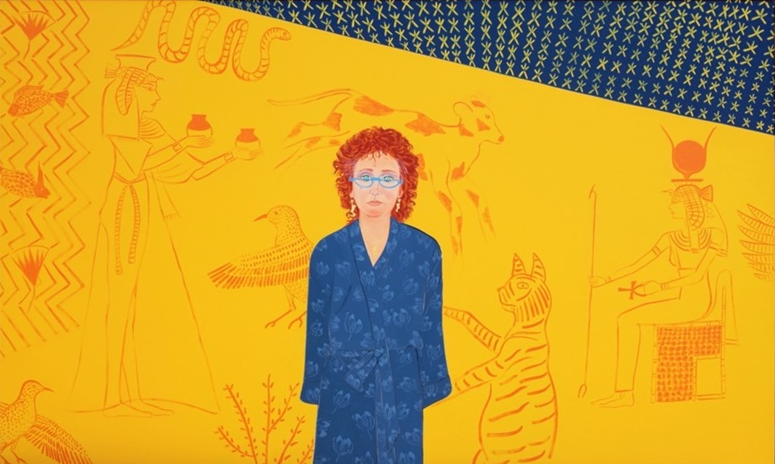
Homage to Akhenaton, 1983, by Joan Brown
The San Francisco Museum of Modern Art (SFMOMA) has been particularly important in showcasing Brown’s work. The museum has displayed many of her major paintings, spanning her evolution from abstract to figurative styles.
Her exhibitions typically highlighted the range of her artistic development, from early abstract expressionist works to her mature figurative paintings. These shows often featured her most recognized images from the 1950s through the 1970s.
Brown’s works continue to be celebrated in retrospectives that emphasize her unique contribution to American painting and her important place in the Bay Area Figurative movement.
Legacy and Influence
Joan Brown’s unique artistic vision and independent spirit continue to resonate in the art world today. Her commitment to personal expression and resistance to market demands established her as a significant figure whose influence extends beyond her lifetime.
Impact on Contemporary Art
Joan Brown’s distinctive figurative style and personal narrative approach have influenced generations of artists. Her bold decision to follow her own artistic path rather than conform to market expectations set an important precedent for independent-minded creators.
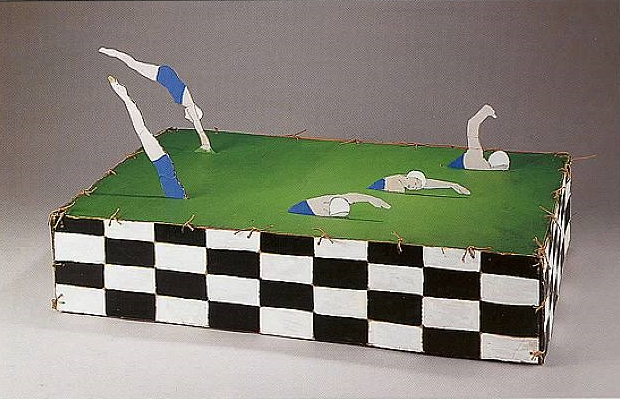
Swimmers, 1974, by Joan Brown
Brown’s work at the California School of Fine Arts (now San Francisco Art Institute) helped shape the Bay Area’s vibrant art scene. As a member of the “second generation” of Bay Area artists, she created a bridge between abstract expressionism and more personal narrative styles.
Her famous Alcatraz swim paintings demonstrate how she incorporated life experiences into her art, inspiring contemporary artists to embrace autobiographical elements in their work.
Collections and Art Market Presence
Brown’s works are prominently featured in major museums including SFMOMA, which recognizes her significance in American art history. The San Jose Museum of Art also houses important pieces from her diverse career.
Despite her resistance to commodification, Brown’s paintings have gained substantial market presence over time. Her unique visual vocabulary, including recurring motifs like fish and swimmers, has made her work instantly recognizable to collectors and enthusiasts.
Recent retrospectives have renewed interest in her contributions, with a major exhibition described as “the most comprehensive reexamination of Brown’s work in the past two decades.”
Enduring Inspirations
Brown’s authenticity and refusal to compromise her vision continue to inspire artists today. Her resistance to “creating something just so others could own it” remains a powerful example of artistic integrity.
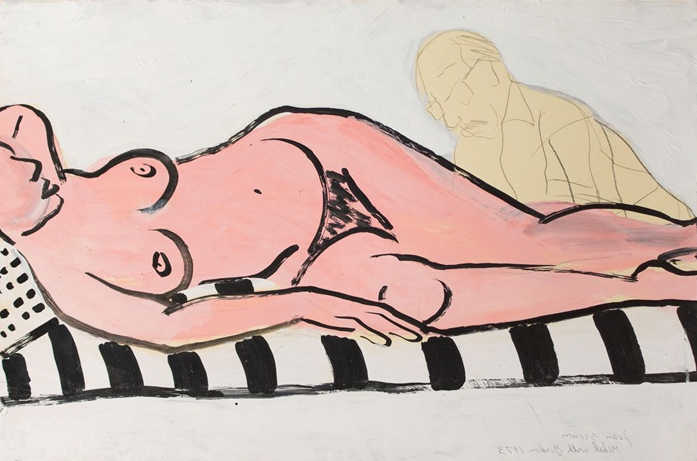
Model with Gordon, 1973, by Joan Brown
Her technical skill, developed during her BFA studies completed in 1959, combined with her willingness to explore personal themes created a body of work that feels both timeless and deeply rooted in her era.
Brown’s explorations of identity, spirituality, and everyday life through painting demonstrate the enduring power of figurative art to communicate complex human experiences.
Frequently Asked Questions
Joan Brown’s artwork has sparked curiosity and admiration among art enthusiasts worldwide. Her unique style, personal journey, and artistic evolution continue to fascinate those who encounter her paintings.
What are the most notable works of Joan Brown?
Joan Brown’s “Questions + Answers #1” (1983) stands as one of her most significant works. This large oil-based enamel on canvas piece measures 72 x 120 inches and exemplifies her later style.
“The Bride” remains among her most discussed paintings, reflecting Brown’s interest in personal narrative and symbolic imagery.
Her self-portraits throughout the 1970s also gained considerable attention for their autobiographical nature and emotional depth.
How has Joan Brown’s style evolved throughout her career?
Brown began as part of the Bay Area Figurative Movement, creating thick, heavily impastoed paintings under the guidance of Elmer Bischoff, who encouraged her to paint from her surroundings.
By the 1970s, her work transformed into a more flat, illustrative style with bold colors and clear outlines, often featuring herself as the subject.
In her later years, Brown’s art incorporated spiritual and mystical elements, reflecting her interest in Eastern philosophy and symbolism.
Which museums or galleries display Joan Brown’s artwork?
The Pennsylvania Academy of the Fine Arts (PAFA) houses Brown’s “Questions + Answers #1” as part of their permanent collection.
The San Francisco Museum of Modern Art maintains several important works by Brown, celebrating her connection to the Bay Area art scene.
The Whitney Museum of American Art in New York and the Berkeley Art Museum also feature significant collections of her paintings.
What are the defining characteristics of Joan Brown’s painting technique?
Brown often used oil-based enamels, creating smooth, flat surfaces with bold, defined outlines—a departure from her earlier impasto technique.
Her color palette evolved to include vibrant, sometimes non-naturalistic colors that created emotional impact rather than realistic representation.
Brown frequently incorporated personal symbols and recurring motifs in her work, creating a visual vocabulary unique to her artistic vision.
Can you describe the significance of the ‘The Bride’ painting by Joan Brown?
“The Bride” represents Brown’s exploration of femininity, social expectations, and personal identity during a period when she was questioning conventional roles.
The painting uses symbolic imagery to comment on marriage as an institution while reflecting Brown’s own experiences with matrimony, having gone through multiple marriages herself.
Its composition and treatment demonstrate Brown’s shift toward a more illustrative style that characterized her mature work.
What influence did Joan Brown’s personal life have on her art?
Brown’s restless spirit and tendency to move on from situations directly influenced the themes of journey and transformation in her work.
These are described as “getting the hell out of places” and “dancing out of marriages.”
Her swimming across San Francisco Bay became both subject matter and metaphor in her paintings, representing personal challenge and freedom.
Brown’s paintings evolved into a visual diary of her life experiences. Her personal journey became the central subject that ultimately led her “towards unexpected joy.”

